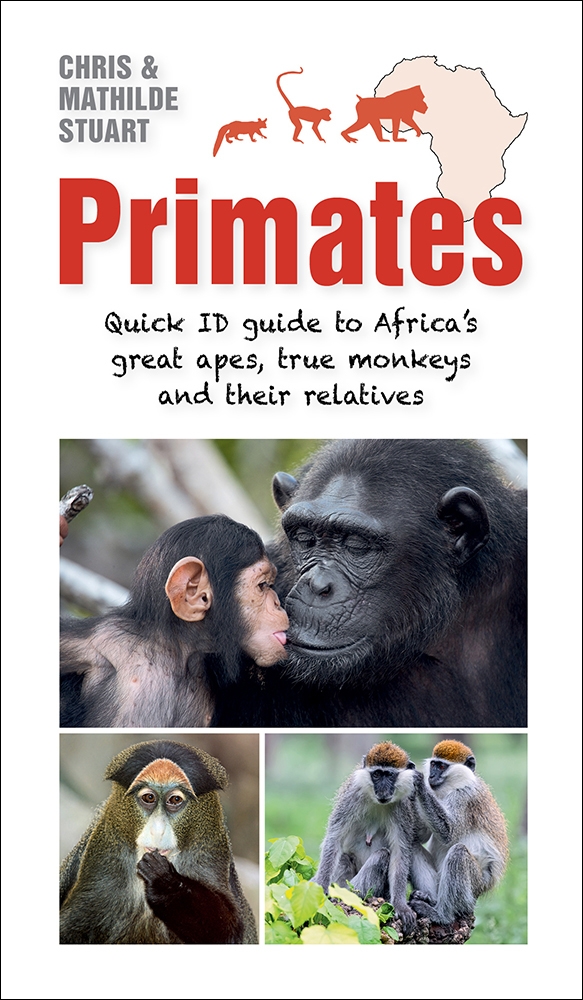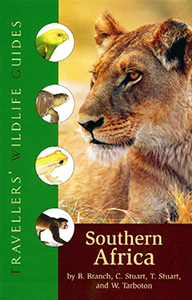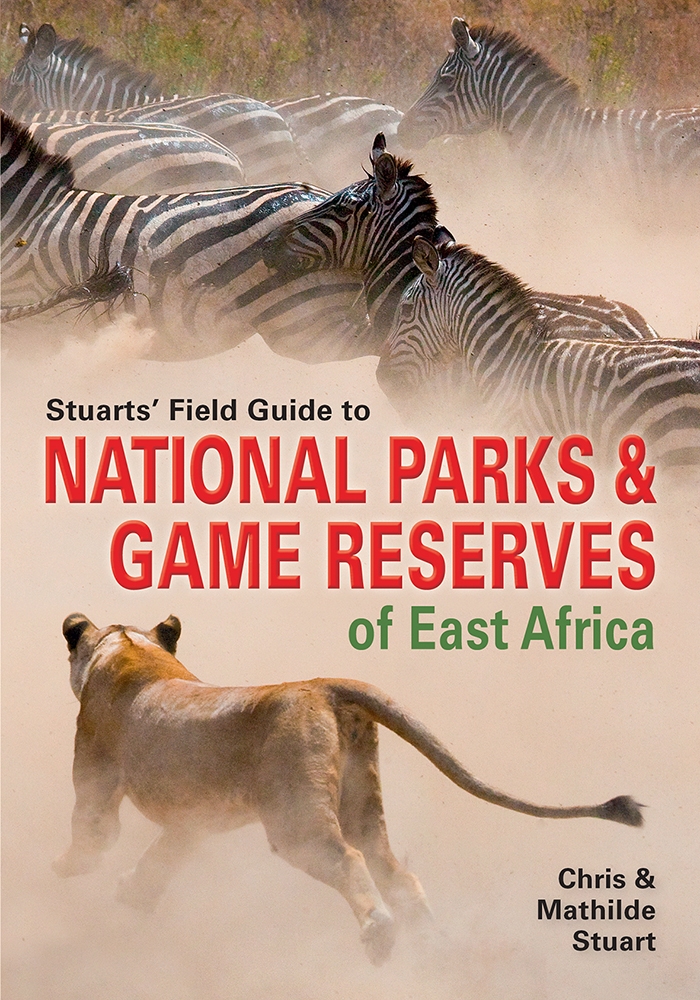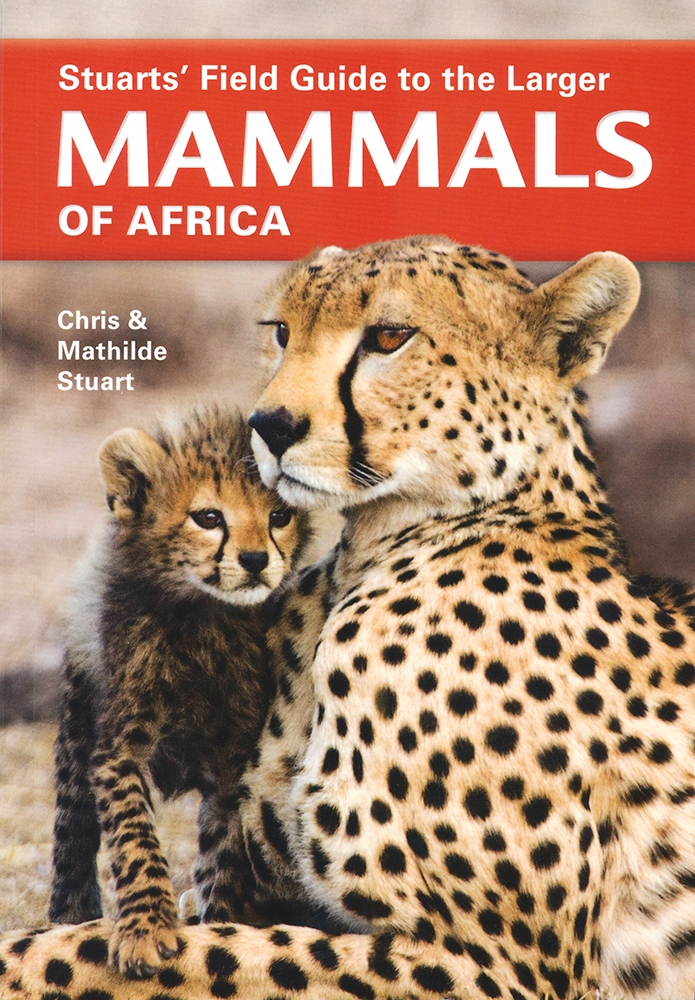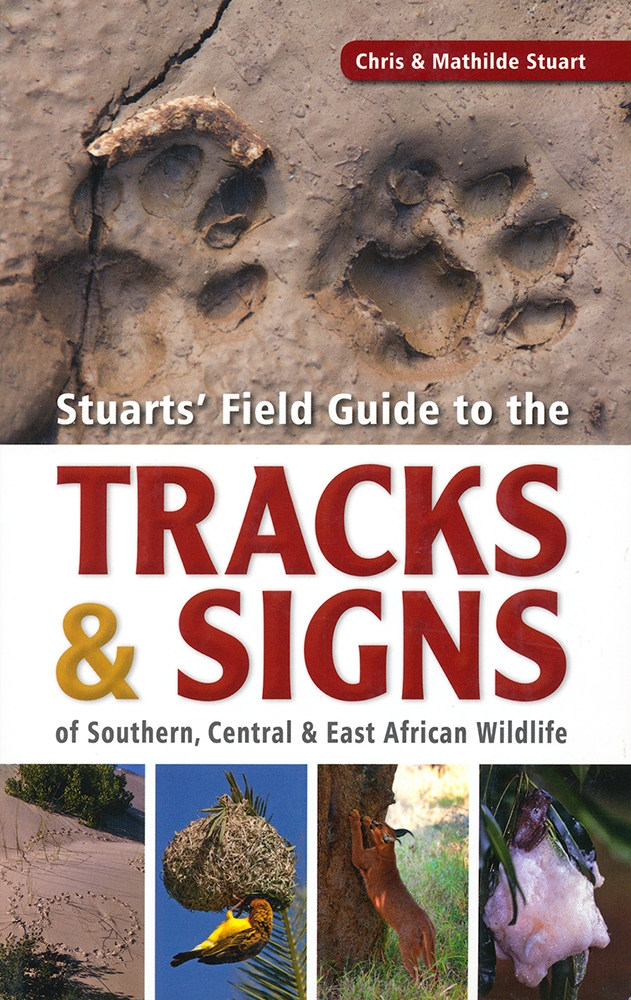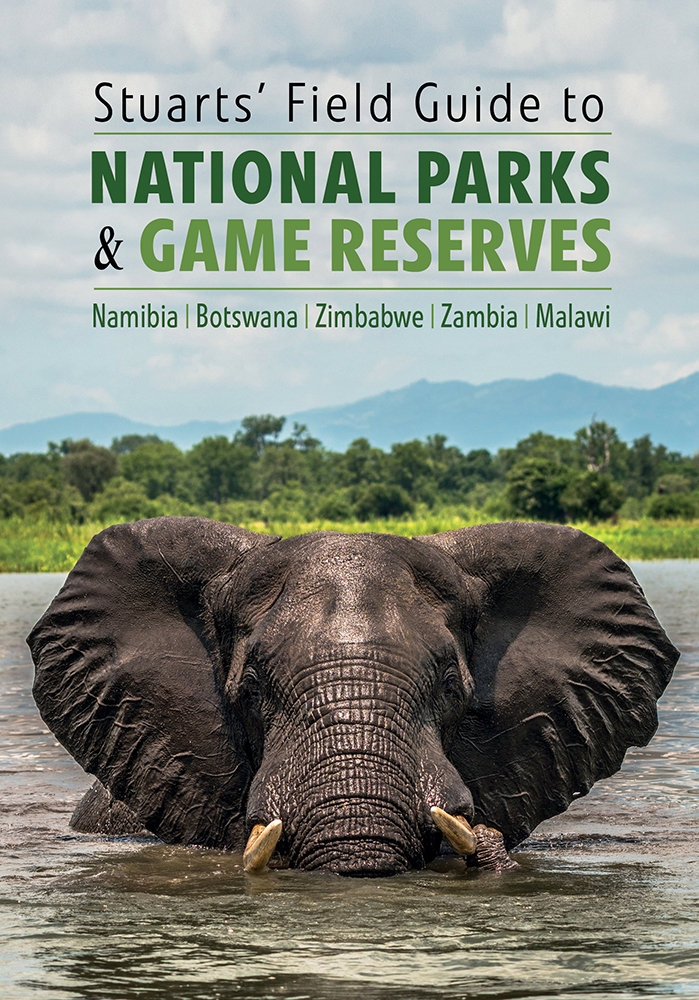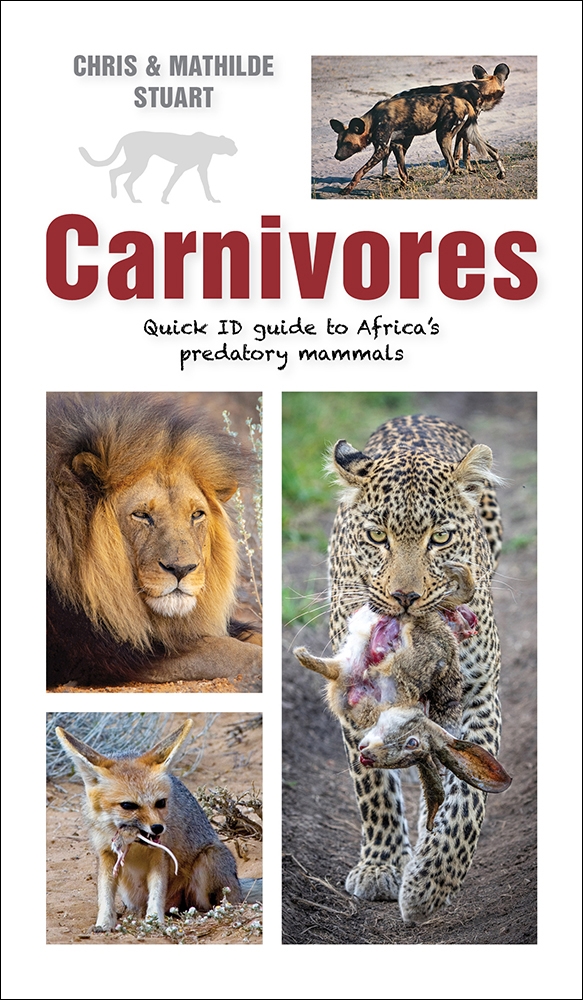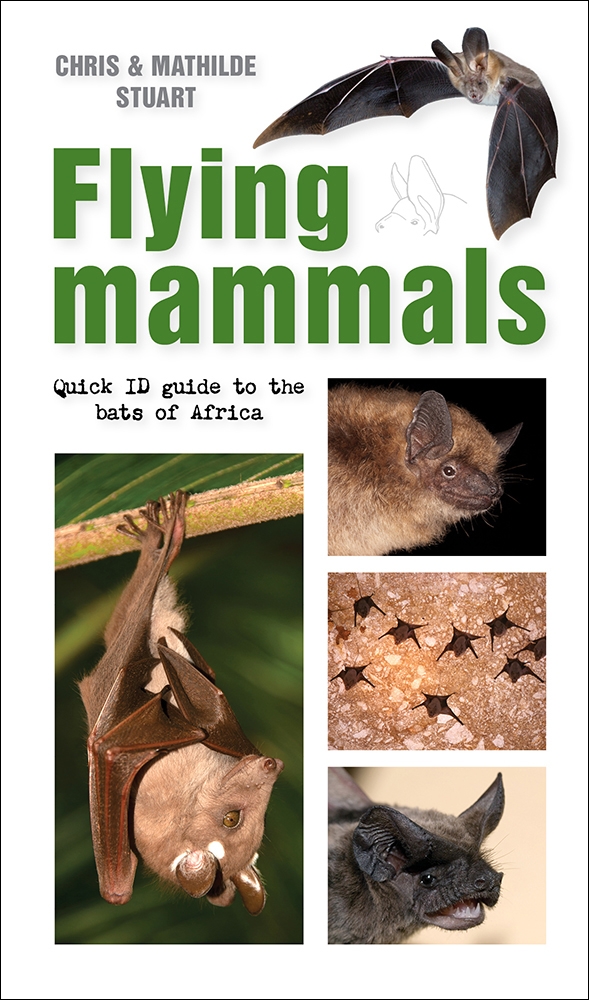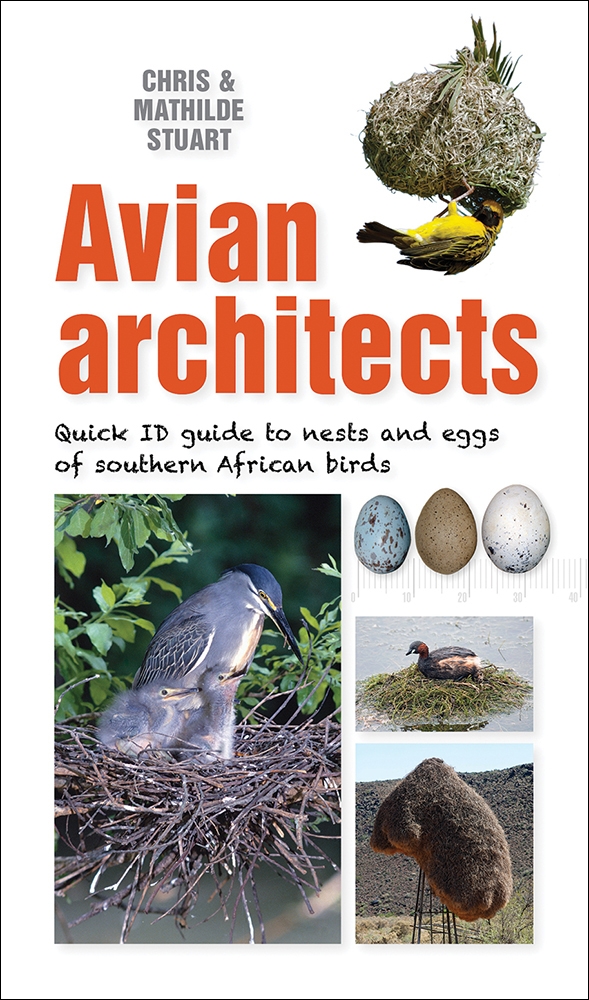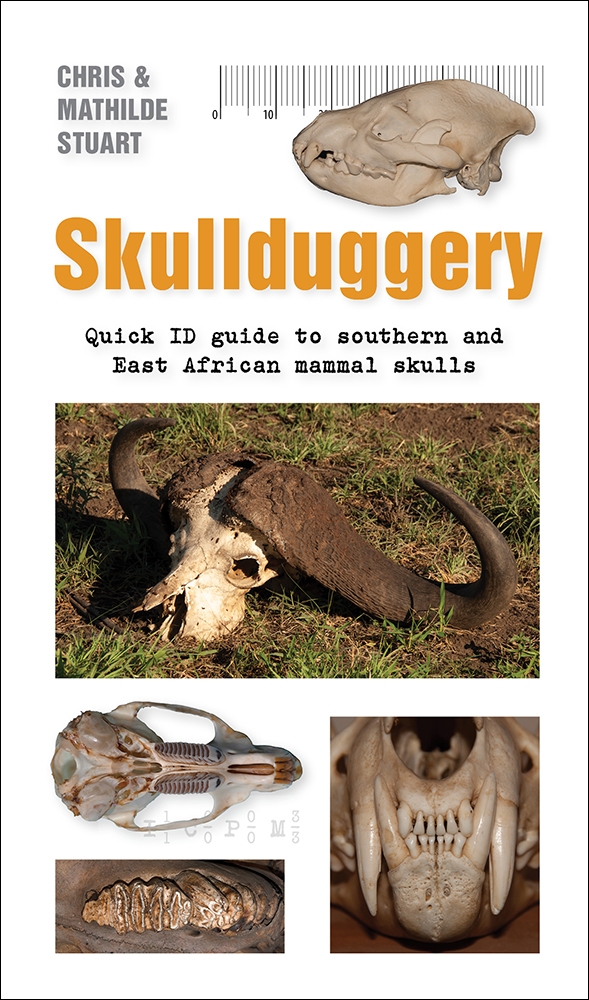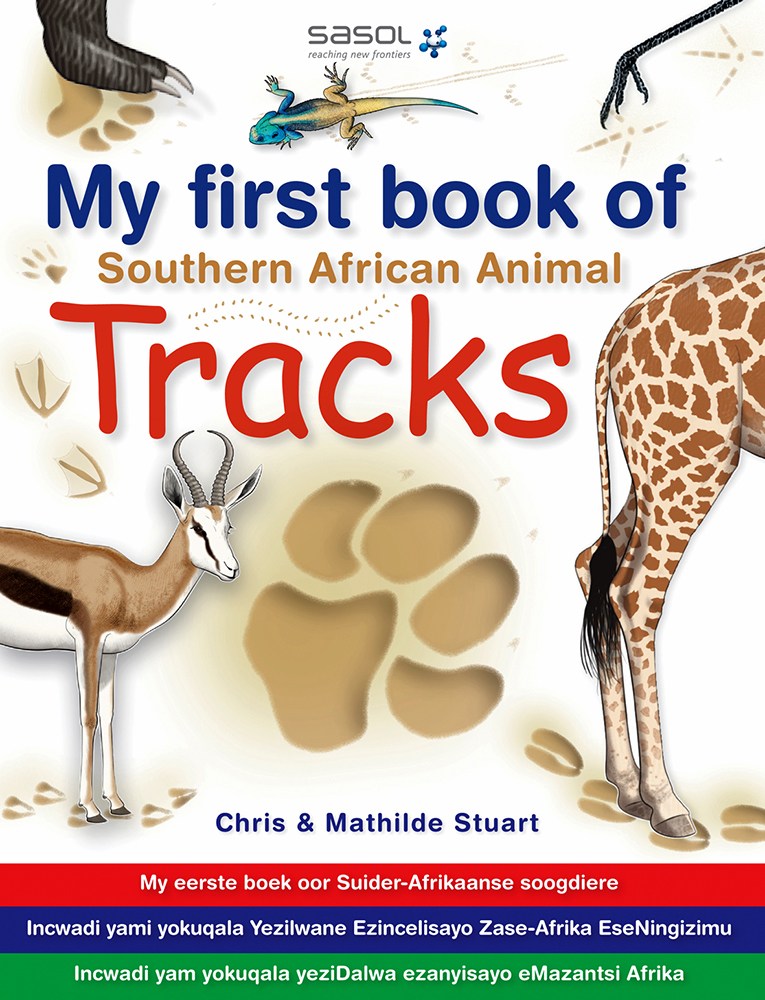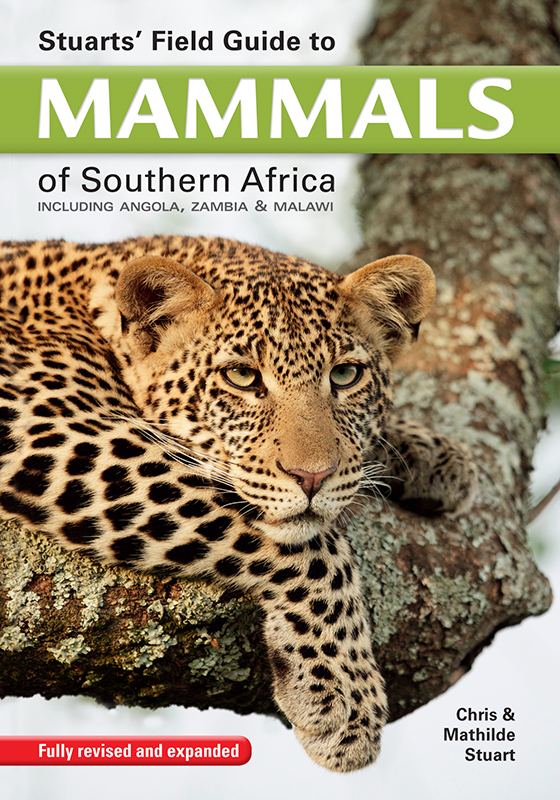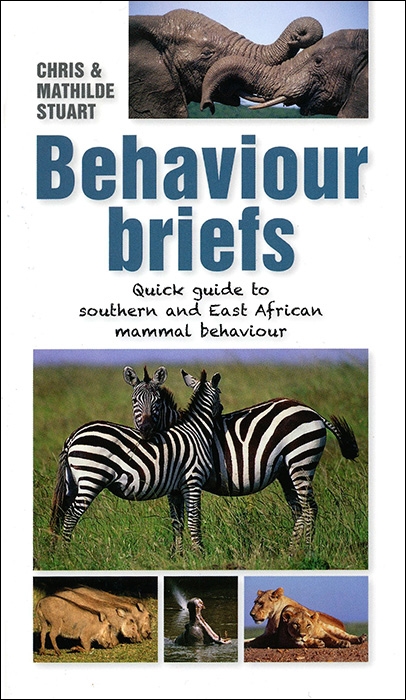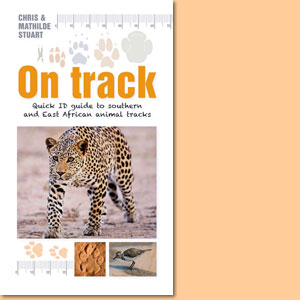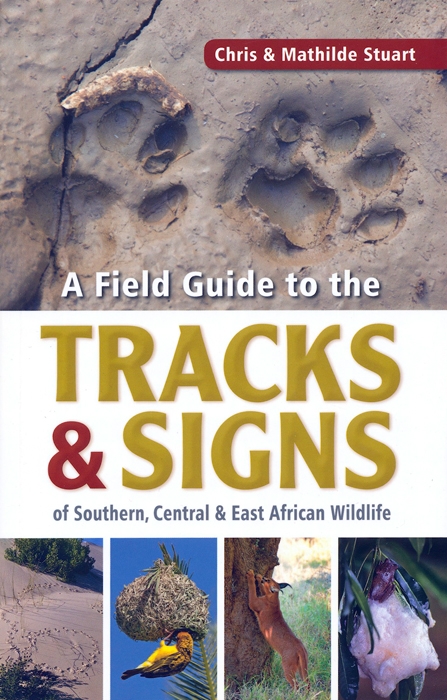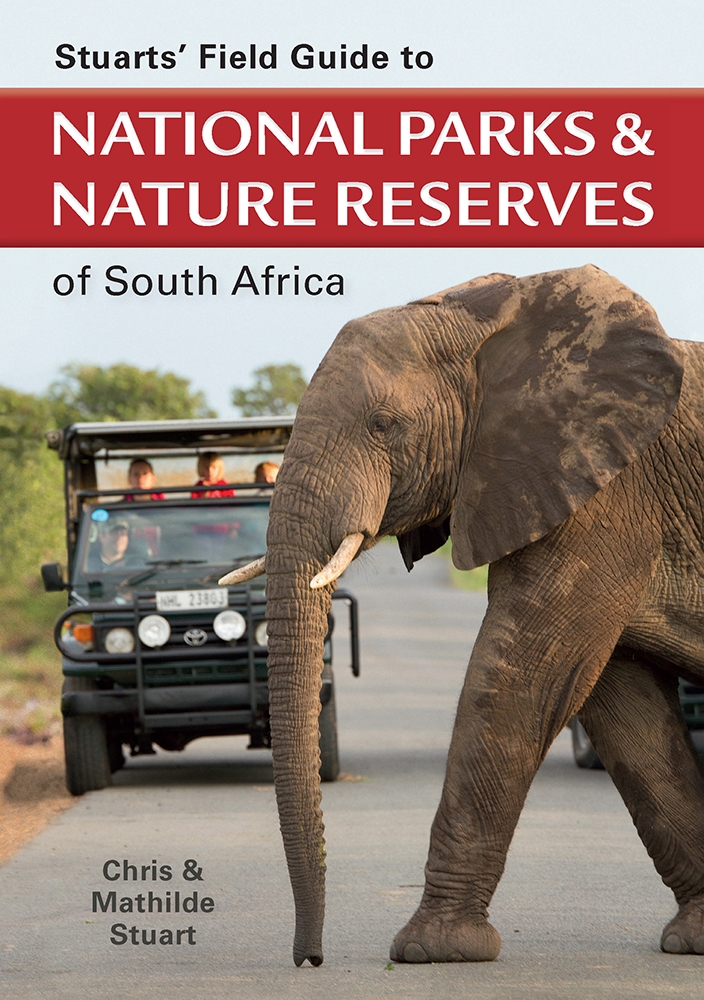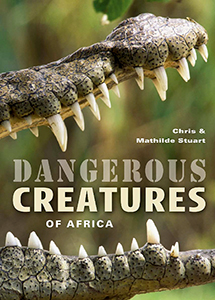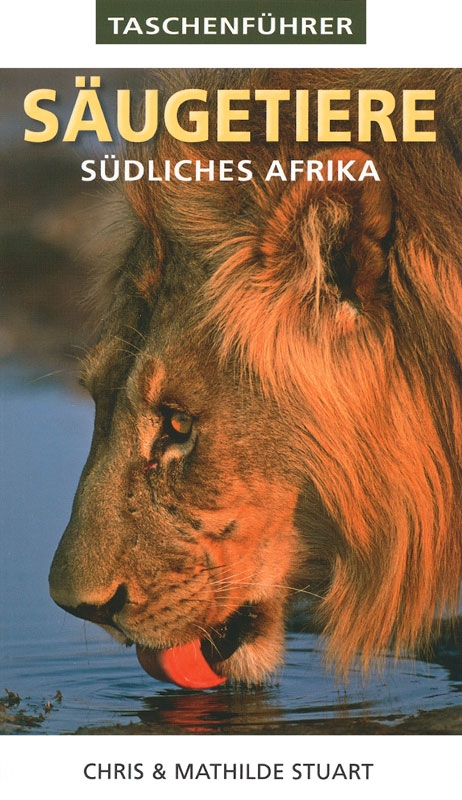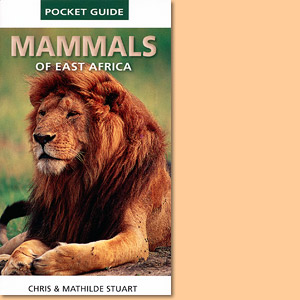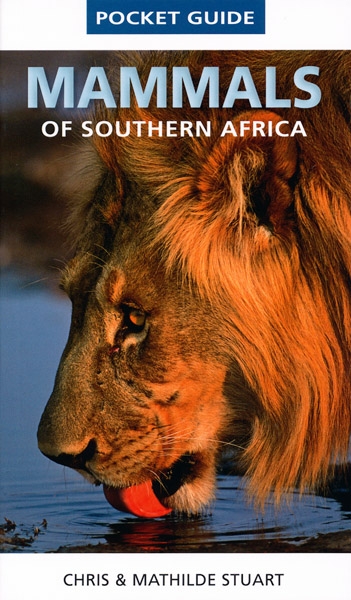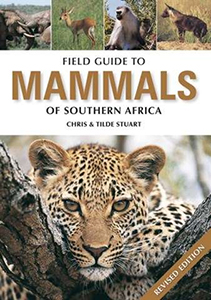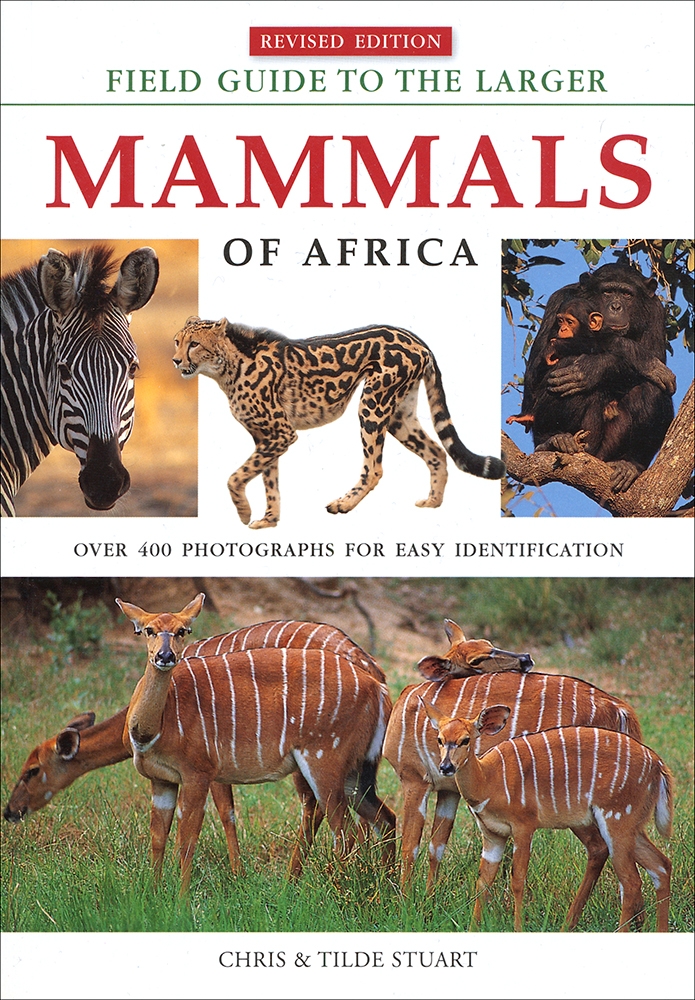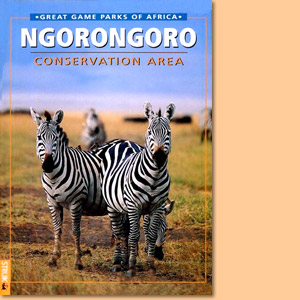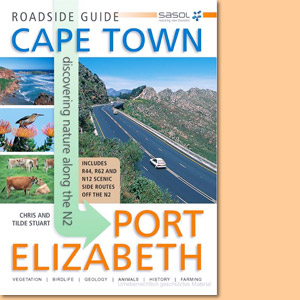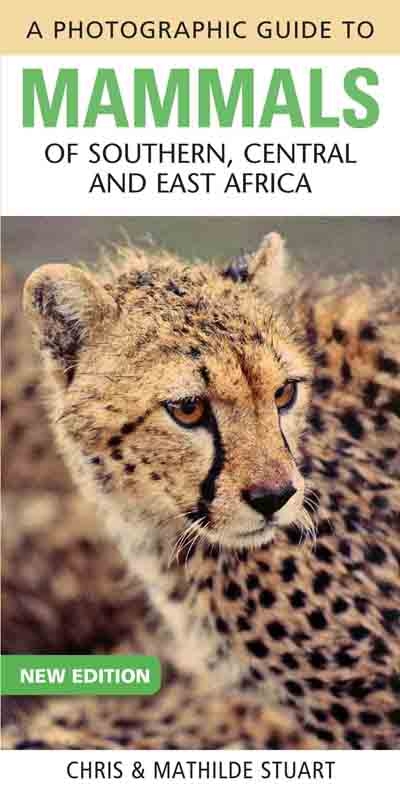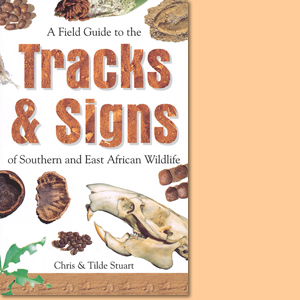Primates: Quick ID guide to Africa's great apes, true monkeys and their relatives, by Chris and Mathilde Stuart.
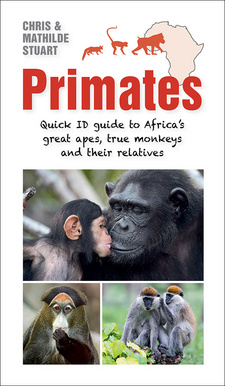
Primates. Quick ID guide to Africa's great apes, true monkeys and their relatives, by Chris and Mathilde Stuart. Penguin Random House South Africa. Imprint: Struik Nature. Cape Town, South Africa 2022. ISBN 9781775847939 / ISBN 978-1-77-584793-9
Primates: Quick ID guide to Africa's great apes, true monkeys and their relatives, by Chris and Mathilde Stuart, introduces you to primate species that you are most likely to see in Africa. It has been designed to help you make positive IDs at a glance, by providing key information together with distribution maps and photographs showing diagnostic features.
Primates are relatively recent denizens of planet Earth, with the most primitive - the prosimians - appearing in the fossil record 50 to 55 million years before the present (BP). Although a great variety of prosimians occurred at the time, the emergence of the first ancestors of the monkeys - some 33.9 million years BP, in the Oligocene - introduced greater competition for resources among primates. The prosimians in many areas switched to a nocturnal lifestyle to avoid the diurnal monkeys. By the early Miocene, from about 23 million years BP, apes were beginning to evolve from monkeys. They in turn displaced the monkeys, pushing them into less favourable habitats. By the late Miocene, up to 5.3 million years BP, our direct ancestors, the hominins, had begun their rise to become the dominant primate species, with a present-day count of some 7.8 billion humans (Homo sapiens) - many more than all other primates put together. Homo sapiens is the most destructive primate that has ever lived, and many of our fellow primates are teetering on the brink of extinction because of our actions. Primates have adapted to many different habitats and several species coexist. They evolved to maintain diversity without undue competition for food. Simply put, in forest environments (where the majority of primates live) they share the space by feeding at different levels, selecting different foods, and foraging at different times. The prosimians are nocturnal, the monkeys and apes diurnal. Even the galagos - with up to five species in some forests - can coexist. Apart from feeding at different levels, the galagos eat different food: some specialise in eating invertebrates and others feed on fruits. The diurnal primates are similarly adapted to coexistence. For example, the colobus monkeys are primarily leaf-eaters, the mangabeys include very hard seeds in their diet (for which they have powerful dentition), and the largest of all, the gorillas, are primarily vegetarian. Most primates are social, living in family groups or large troops, with the record for the largest primate congregation being held by the grass-eating gelada, with up to 1,200 individuals gathering in a herd. Most primates give birth to a single young at a time, but some prosimians have more than one. Africa's primates face numerous threats including major habitat loss, hunting for bushmeat, and the exotic pet trade. No accurate figures are available, but thousands of primates are commercially hunted annually for the bushmeat trade across much of sub-Saharan Africa. None of the primates are spared, from the small galagos to the gorillas, with the illegal trade supporting thousands of people in poverty-stricken communities. Law enforcement is largely non-existent in many regions where primates and other wildlife are hunted. Most at risk are the forest-dwelling primates. The threat is even greater on the island of Madagascar, where many of the 100 or so lemur species face extinction.
This is an excerpt from Primates, quick ID guide to Africa's great apes, true monkeys and their relatives, by Chris and Mathilde Stuart.
Title: Primates
Subtitle: Quick ID guide to Africa's great apes, true monkeys and their relatives
Author: Chris Stuart; Mathilde Stuart
Publisher: Penguin Random House South Africa
Imprint: Struik Nature
Cape Town, South Africa 2022
ISBN 9781775847939 / ISBN 978-1-77-584793-9
Softcover, 10 x 18 cm, 40 pages, throughout colour photographs
Stuart, Chris und Stuart, Tilde im Namibiana-Buchangebot
Primates: Quick ID guide to Africa's great apes, true monkeys and their relatives
Primates Quick ID is a compact and quick ID identification guide to Africa's great apes, true monkeys and their relatives.
Traveller's Wildlife Guide Southern Africa
Traveller's Wildlife Guide Southern Africa introduces 500 of Southern Africa’s most common amphibians, reptiles, birds, and mammals.
Stuart's Field Guide to National Parks and Game Reserves of East Africa
Stuart's Field Guide to National Parks and Game Reserves of East Africa provides an overview of some 58 protected areas across East Africa.
Stuarts’ Field Guide to the Larger Mammals of Africa
Stuarts’ Field Guide to the Larger Mammals of Africa concentrates on the more visible and easily distinguished larger species.
Stuarts' Field Guide to the Tracks & Signs of Southern, Central and East African Wildlife
Stuarts' Field Guide to the Tracks & Signs of Southern, Central and East African Wildlife, this is the 5th revised edition.
Stuarts' Field Guide to National Parks and Nature Reserves of Namibia, Botswana, Zimbabwe and Zambia
Stuarts' Field Guide to National Parks and Nature Reserves of Namibia, Botswana, Zimbabwe and Zambia.
Carnivores: Quick ID guide to Africa's predatory mammals
Carnivores: Quick ID guide is a compact and quick ID identification guide to Africa's predatory mammals.
Flying Mammals Quick ID guide to the bats of Africa
Flying Mammals Quick ID is a compact and quick ID identification guide to the bats of Africa.
Avian Architects: Quick ID guide to nests and eggs of southern African birds
Avian Architects: Quick ID is a compact and quick ID identification guide to nests and eggs of southern African birds.
Skullduggery: Quick ID guide to southern and East African mammal skulls
Skullduggery is a compact and quick ID identification guide to skulls of southern and East African mammals.
My first book of Southern African animal tracks
My first book of Southern African Animal Tracks introduces 55 different types of animals and their footprints.
Stuarts' Field Guide to Mammals of Southern Africa
Stuart's Field Guide to Mammals of Southern Africa covers near to 400 mammal species including Angola, Zambia and Malawi since the 5th edition of 2015.
Behaviour briefs: Quick guide to southern and East African animal behaviour
Why do they do that and what next? Behaviour briefs is a quick guide to southern and East African animal behaviour.
On Track: Quick ID Guide to Southern and East African Animal Tracks
On Track is a quick identification guide to tracks of Southern and East African most commonly found mammals, reptiles, rodents, birds and insects.
A Field Guide to the Tracks & Signs of Southern, Central and East African Wildlife
Latest edition of A Field Guide to the Tracks & Signs of Southern, Central and East African Wildlife.
Stuarts' Field Guide to National Parks and Nature Reserves of South Africa
Stuarts' Field Guide to National Parks and Nature Reserves of South Africa offers a comprehensive overview of 43 parks, reserves and wilderness areas.
Dangerous creatures of Africa
The focus of Dangerous creatures of Africa is on understanding, identifying, avoiding and surviving these potential hazards of the African wilds.
Taschenführer: Säugetiere, Südliches Afrika
Der Taschenführer Säugetiere: Südliches Afrika, legt seinen Schwerpunkt auf die größeren, öfter gesehenen Tierarten, schließt allerdings auch einige ungewöhnliche Arten ein.
Mammals Of East Africa Pocket Guide
Mammals Of East Africa Pocket Guide covers all of the common and some of the less common mammal species.
Mammals of Southern Africa Pocket Guide
Authoritative and colourfully illustrated, Mammals of Southern Africa Pocket Guide offers concise information.
Field Guide to Mammals of Southern Africa
A total of 337 species are covered in this fully revised comprehensive field guide to mammals of Southern Africa.
Field Guide to the Larger Mammals of Africa
Field Guide to the Larger Mammals of Africa provides over 400 colour photos, with concise, pertinent information highlighting the diagnostic features of each species.
Ngorongoro Conservation Area
From the series 'Great Game Parks of Africa' this is a portrait of the Ngorongoro Conservation Area.
Sasol Roadside Guide. Cape Town-Port Elizabeth: Discovering Nature Along the N2
The Sasol Roadside Guide Cape Town-Port Elizabeth: Discovering Nature Along the N2 interprets the surrounding countryside - plants, birds, mammals, reptiles, agriculture, geology.
A Photographic Guide to Mammals of Southern, Central and East Africa
A Photographic Guide to Mammals of Southern, Central and East Africa introduces 152 mammal species of each family group.
Field Guide to Tracks and Signs of Southern and East African Wildlife
Related to Southern African and East African Wildlife, this great field guide is about their tracks and signs, like droppings, feeding signs, scent marks and others.

